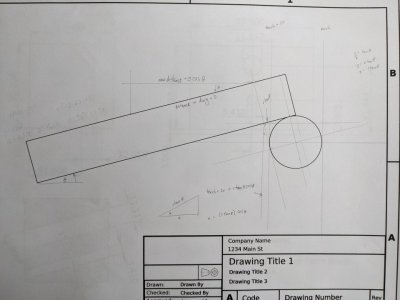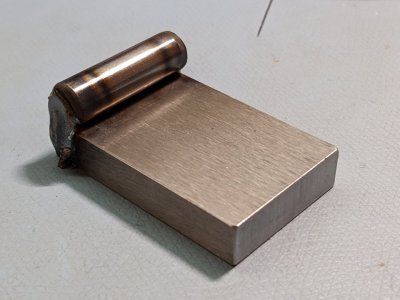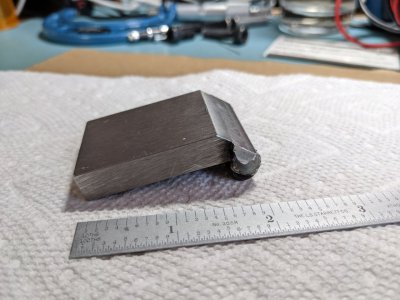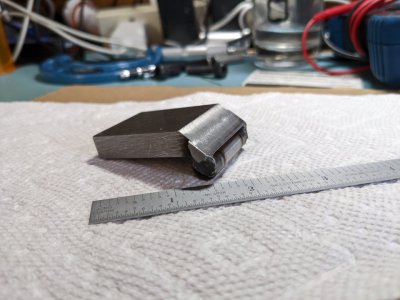- Joined
- Dec 18, 2019
- Messages
- 6,428
Been thinking about making the tilted holes. Have some ground angles that I can use to tilt the piece in the vise. From searching on HM I found @RJSakowski posted a picture of a fixture to find the virtual corner of a tilted piece. Was thinking about how to make this. More on how to fixture it for the weld so the tool will end up being useful. At the tilt angle, (15 degrees in my design) one needs to be able to touch off the dowel in the vertical plane. Is that sufficient? Don't quite yet understand this, enough. Need to noodle this some more.
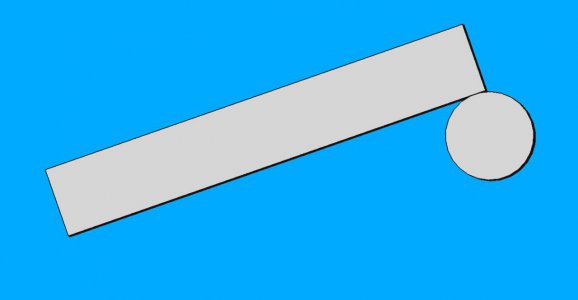
If I am visualizing this correctly, a dowel pin is placed on the welding table and a flat plate is placed over it. (Probably make it easier to clamp if there are two dowels) Then a weld can be made at the end of the plate joining the dowel. As long as the weld bead isn't too thick and the rod is still tangential to the plate surface one should be ok. Having not done "machining tolerance" welding before, how does one ensure the tangential condition is maintained when the weld cools? Assuming one welds only on the right side, won't the dowel try to rotate towards the contracting weld? Will it lift from the plate?

If I am visualizing this correctly, a dowel pin is placed on the welding table and a flat plate is placed over it. (Probably make it easier to clamp if there are two dowels) Then a weld can be made at the end of the plate joining the dowel. As long as the weld bead isn't too thick and the rod is still tangential to the plate surface one should be ok. Having not done "machining tolerance" welding before, how does one ensure the tangential condition is maintained when the weld cools? Assuming one welds only on the right side, won't the dowel try to rotate towards the contracting weld? Will it lift from the plate?


